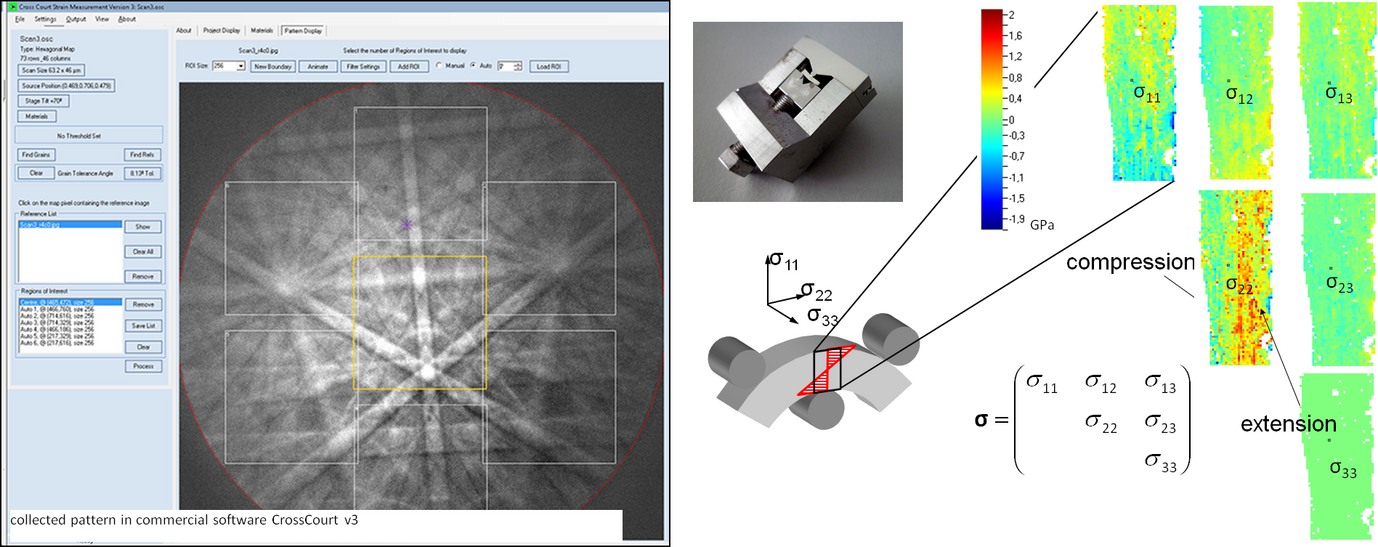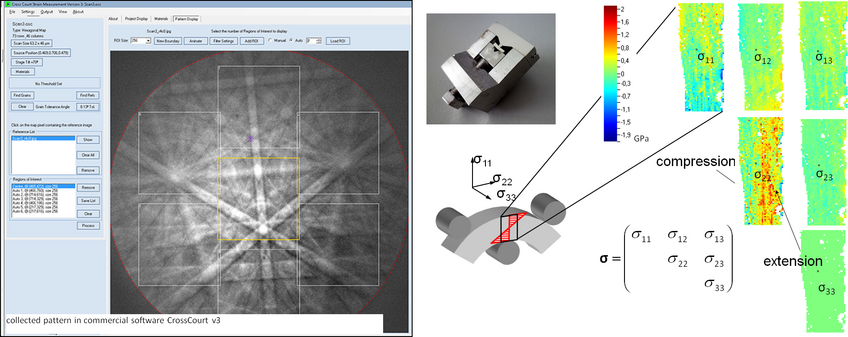Cross-correlation EBSD (EBSD at high angular resolution) - XR-EBSD
XR-EBSD is a particular way to analyse EBSD patterns which allows measuring elastic distortions and residual stresses as well as very small rotations of a crystal lattice.

Right: Mapping of elastic stress components on a slightly bend single crystal TWIP steel .
EBSD diffraction patterns are a direct projection of the crystal lattice on the detector plane. Therefore, they convey, in principle, information on the shape of the crystal lattice (including elastic distortions) and on the position of the crystal lattice with respect to the projection plane, e.g. the crystal orientation. The conventional analysis of EBSD patterns using a so-called Hough transform, allows measuring the orientation of a crystal with a precision of only about 0.5°. Elastic lattice distortions cannot be detected at all. Therefore, Wilkinson et al. (see references) developed a method, which enables the determination of relative lattice distortions and rotations by a very sensitive pattern comparison using a cross-correlation technique. In this technique a pattern obtained from a selected position on the sample is compared to a pattern from a reference point which is supposed to be free of elastic strain (or of known elastic strain) and which is very close in orientation to that of the measured position.
The comparison is performed by subdividing the two patterns into several small regions of interest. These regions are supposed to be unstrained (or the strain is below the detection limit). During the comparison it is determined how every of these regions is shifted with respect to the reference pattern. The shift vector directly relates to the distortion vector of a crystallographic direction. From all distortion vectors of the whole pattern the displacement gradient tensor can be calculated and from this the stretch tensor and the rigid body rotation tensor.
As a result relative elastic strains of about 10-4 and rotations of 0.01° can be measured.
A.J. Wilkinson, G. Meaden, and D.J. Dingley. High resolution mapping of strains and rotations using electron backscatter diffraction. Mat. Sci. Tech., 22:1271–1278, 2006
